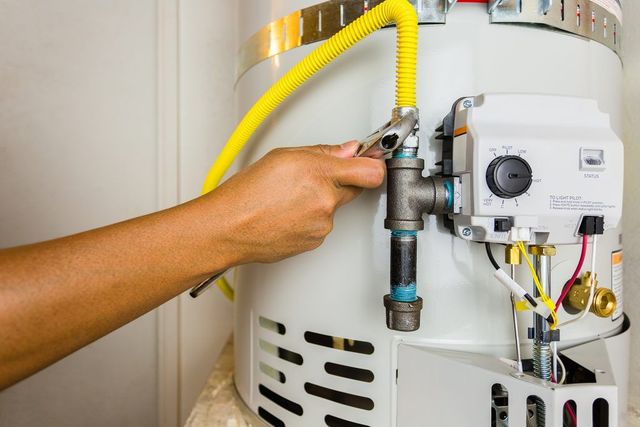Effective Strategies for Maintaining Your Home's Hot Water SystemEssential Tips on Caring for Your Home's Hot Water System
Effective Strategies for Maintaining Your Home's Hot Water SystemEssential Tips on Caring for Your Home's Hot Water System
Blog Article
We have uncovered this great article on Water Heater Maintenance Tips You Can't Afford to Forget listed below on the web and accepted it made perfect sense to discuss it with you in this article.

Warm water is necessary for day-to-day comfort, whether it's for a rejuvenating shower or washing recipes. To guarantee your warm water system runs effectively and lasts much longer, routine maintenance is key. This article provides practical pointers and understandings on exactly how to preserve your home's hot water system to avoid disruptions and pricey fixings.
Introduction
Maintaining your home's hot water system may appear difficult, but with a couple of basic steps, you can ensure it runs efficiently for many years to find. This overview covers every little thing from comprehending your hot water system to DIY upkeep ideas and knowing when to call professional help.
Relevance of Preserving Your Hot Water System
Routine maintenance not just prolongs the life expectancy of your warm water system but additionally guarantees it operates efficiently. Disregarding upkeep can result in lowered effectiveness, greater power bills, and also premature failure of the system.
Indicators Your Hot Water System Needs Upkeep
Understanding when your warm water system needs attention can stop major concerns. Watch out for indicators such as inconsistent water temperature, unusual sounds from the heater, or rusty water.
Comprehending Your Warm Water System
Before diving right into upkeep tasks, it's practical to understand the fundamental parts of your warm water system. Usually, this consists of the hot water heater itself, pipes, anode poles, and temperature level controls.
Monthly Upkeep Tasks
Routine month-to-month checks can aid catch minor concerns before they intensify.
Purging the Water Heater
Flushing your water heater gets rid of debris buildup, improving effectiveness and lengthening its life.
Checking and Changing Anode Rods
Anode rods avoid rust inside the container. Inspecting and replacing them when broken is crucial.
Examining and Changing Temperature Setups
Changing the temperature level setups makes sure ideal efficiency and safety and security.
DIY Tips for Maintenance
You can do several maintenance jobs yourself to keep your hot water system in leading problem.
Checking for Leaks
Regularly inspect pipelines and links for leaks, as these can result in water damages and greater bills.
Evaluating Stress Alleviation Valves
Examining the pressure relief valve ensures it operates correctly and avoids extreme stress build-up.
Shielding Pipelines
Shielding warm water pipelines lowers warmth loss and can conserve power.
When to Call an Expert
While DIY maintenance is advantageous, some issues call for specialist experience.
Complicated Problems Needing Expert Help
Examples consist of significant leakages, electric issues, or if your water heater is regularly underperforming.
Routine Specialist Maintenance Benefits
Specialist upkeep can include detailed assessments, tune-ups, and guaranteeing compliance with safety and security requirements.
Verdict
Normal upkeep of your home's hot water system is essential for performance, durability, and expense savings. By following these pointers and recognizing when to look for expert help, you can ensure a trusted supply of warm water without unforeseen disruptions.
Water Heater Maintenance Tips
Test the TPR Valve
Shut off the power and the cold-water supply valve. Place a bucket under the pipe connected to the temperature-pressure-release (TPR) valve on the top or side of the tank. (This valve opens if the tank pressure gets too high.) Lift the valve’s tab to let some water out, then let go. If water keeps flowing, drain the tank partway, unscrew the old valve with a pipe wrench, and install a new one. Check the Anode Rod
Put a hose to the tank’s drain cock and let out a few gallons of water. Now fit a 1 1/16-inch socket onto the rod’s hex head on top of the heater (or under its top plate) and unscrew the rod. If it’s less than ½ inch thick or coated with calcium, buy a new one, wrap its threads with Teflon tape, put it back in the tank, and tighten securely. Use this segmented rod if headroom above the tank is limited. Drain the Tank and Wash Out Sediment
Drain the remaining water in the tank into the bucket, then stir up the sediment on the tank’s bottom by briefly opening the cold-water supply valve. Drain and repeat until clean water comes out of the hose. Close the drain cock, refill the tank, and turn its power back on. Adjust the Temperature
Find the temperature dial on the side of the tank and unscrew its cover. Adjust the dial to 120 degrees using a flathead screwdriver. For every 10 degrees the temperature is lowered, you can expect to save up to 5 percent in energy costs. Turn the water heater off or the thermostat down to its lowest setting if you plan to be away from home for more than three days. Insulate the Pipes
Buy some self-sticking 3/8-inch-thick foam pipe insulation that matches the pipes’ diameter. Slide the foam over the hot-and cold-water pipes as far as you can reach. Insulating the cold-water pipe prevents condensation in summer. Peel the tape and squeeze the insulation closed. If the pipe is 6 inches or less from the flue, cover it with 1-inch-thick unfaced fiberglass pipe wrap. https://www.thisoldhouse.com/plumbing/21016402/how-to-maintain-a-water-heater

As a serious person who reads on How to Maintain Your Water Heater & Prolong its Life, I think sharing that article was a great idea. Are you aware of another person who is involved in the topic? Be sure promote it. We take joy in reading our article about Water Heater Maintenance Tips You Can't Afford to Forget.
Request A Quote Report this page